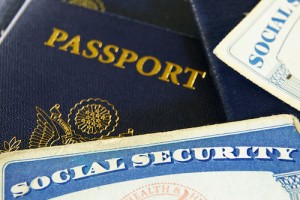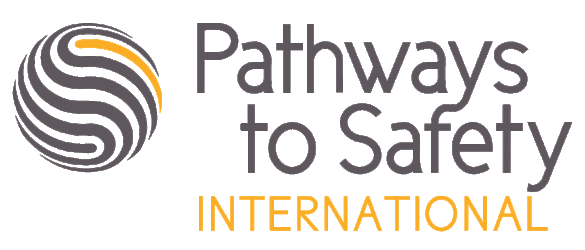Staying Safe
Staying Safe Land Line
When you have finished speaking with a Pathways Case Manager, hang up the phone and then lift the receiver, dial any number and hang up again. This way, if someone presses the redial button on that same phone they won’t be connected to our crisis line.
Staying Safe Cell Phone
Cell phones can be a beacon, tracking your exact location in real time. Call and text history can also be retrieved by an abusive partner or perpetrator. Additionally, a location tracking device (GPS) can be placed on your car, in your purse or other possessions. Consider purchasing a pay as you go phone that you keep in a safe place to allow you to make calls. After speaking with a Pathways Advocate from a cell phone, remember to delete the call from your call log.


Staying Safe Online
If you are living with an abuser or know your perpetrator, the safest way to look for resources online is to use a computer that the abuser cannot access, such as a public terminal at a library, community center, or sexual violence advocacy organization. It is possible for the abuser to trace your Internet activities and see that you have viewed the Pathways website. If you must use a computer that your abuser or perpetrator has access to, please read the following instructions.
Please select your browser below for instructions on how to clear the Pathways website to minimize risk after viewing. Please Note: This will not erase information from spyware or key-logging devices.

Staying Safe on Social Media
Only post things you want the public to see or know. Once it’s online, it’s no longer under your control.
Be protective of your personal information. Your phone numbers and addresses enable people to contact you directly, and things like your birth date, the schools you attended, your employer and photos with landmarks may make it easier for someone to find where you live, hang out or go to school.
Set boundaries and limits. Tell people not to post personal information, negative comments or check-ins about you on social media. Ask people not to post or tag pictures if you’re not comfortable with it.
Keep your passwords private – there is no need to share passwords to social media accounts with anyone.
If you have a friend in an abusive relationship DO NOT post information about them without getting their permission. You could jeopardize their safety.
*Information on staying safe with cell phones and social media is from The National Hotline, www.thehotline.org.
Safety Planning
If you are still in the relationship:
- If you have access to your vital documents such as: passports, visas, birth certificate, children’s birth certificate, medical documents, and financial records keep them safe and keep copies of each in a safe, secure location.
- Think of a safe place to go if an argument occurs – avoid rooms with no exits (bathroom), or rooms with weapons (kitchen).
- Think about and make a list of safe people to contact.
- Keep change with you at all times.
- Memorize all important numbers.
- Establish a “code word” or “sign” so that family, friends, teachers or co-workers know when to call for help.
- Think about what you will say to your partner if he/she becomes violent.
Remember, you have the right to live without fear and violence.
If you have left the relationship:
- Change your phone number.
- Screen calls.
- Save and document all contacts, messages, injuries or other incidents involving the batterer.
- Change locks, if the batterer has a key.
- Avoid staying alone.
- Plan how to get away if confronted by an abusive partner.
- If you have to meet your partner, do it in a public place.
- Vary your routine.
- Notify school and work contacts.
- Call a shelter for battered women.
Copyright 2017 Pathways All Rights Reserved

Technology and Safety
Abusers can find ways to track and control their partners through monitoring technology. You can use this information to create a safety plan for your technology use.
Many abusive people use technology to watch or stalk their partners. Stalking technology is often cheap or free, and can be very easy to use even for abusers who are not familiar with technology. Be especially cautious of abusers who are tech-savvy. Those whose professions or hobbies involve computers and technology could potentially be monitoring your computer activities. It is possible to monitor private information from websites, emails, instant messages, or phone calls (through services like Skype). Take precautions when visiting websites that contain domestic violence or sexual assault advocacy and safety planning resources. Try to use a computer that your abuser doesn’t have access to or hasn’t ever used, especially when searching or reaching out for assistance. Public places such as libraries, community centers, or internet cafés may be safer options than a personal computer. Consider using the computer of a trusted family member or friend that your abuser doesn’t have access to or know about.
Be very cautious of your email account. If you even suspect that your abuser might have knowledge of your password and login information, change it immediately. Consider changing your account’s security questions or PIN. The safest option is to create a new email or instant messaging account on a safe computer. Do not create or check this new account on a computer that the abuser has access to. Set up a new email account that is provided through a free website, such as Hotmail, Google, or Yahoo. Create an email that does not have your first/last name/important information that the abuser can associate you to.
Be careful when using your computer and be aware of what you use it for. It’s impossible to completely clear the history of all sites you have visited. There is computer monitoring software that can easily be placed on a computer which allows an abuser to view all of your computer activity. Use caution when visiting any of your bank accounts or other financial accounts that your abuser might also have access to. Consider using computers at an internet café/library your abuser wouldn’t know about.
Avoid using a personal cellphone for safety planning, if possible, especially when your abuser and you are on the same phone plan. Text messages and cellphone calls may be available on your phone bill or by contacting your provider. This can give your abuser information about to whom and where you have been making phone calls. If possible, use the phone of a trusted friend or family member or find a public phone. Consider using a prepaid or “burner” cellphone for making calls to domestic violence and/or sexual assault hotlines, shelters, or friends and family members. These prepaid cellphones are not as easily traceable as a “smart” phone is.
GPS, a location tracking device, is now installed in many cell phones and cars. There are apps that can be used to track your whereabouts through your phone. Contact your cell phone carrier to see if the GPS in your phone has been activated or can used to locate you. GPS trackers can also be placed inside your car or personal object such as a purse or a child’s toy to follow your movement.
If you think your activities are being monitored or that you are being followed, you are probably right. Abusers are persistent and use creative ways to maintain power and control. Trust your instincts and talk to a Crisis Advocate to create a plan.
*Information on Technology and Safety was adapted from the National Network to End Domestic Violence, http://nnedv.org/projects/safetynet.html
